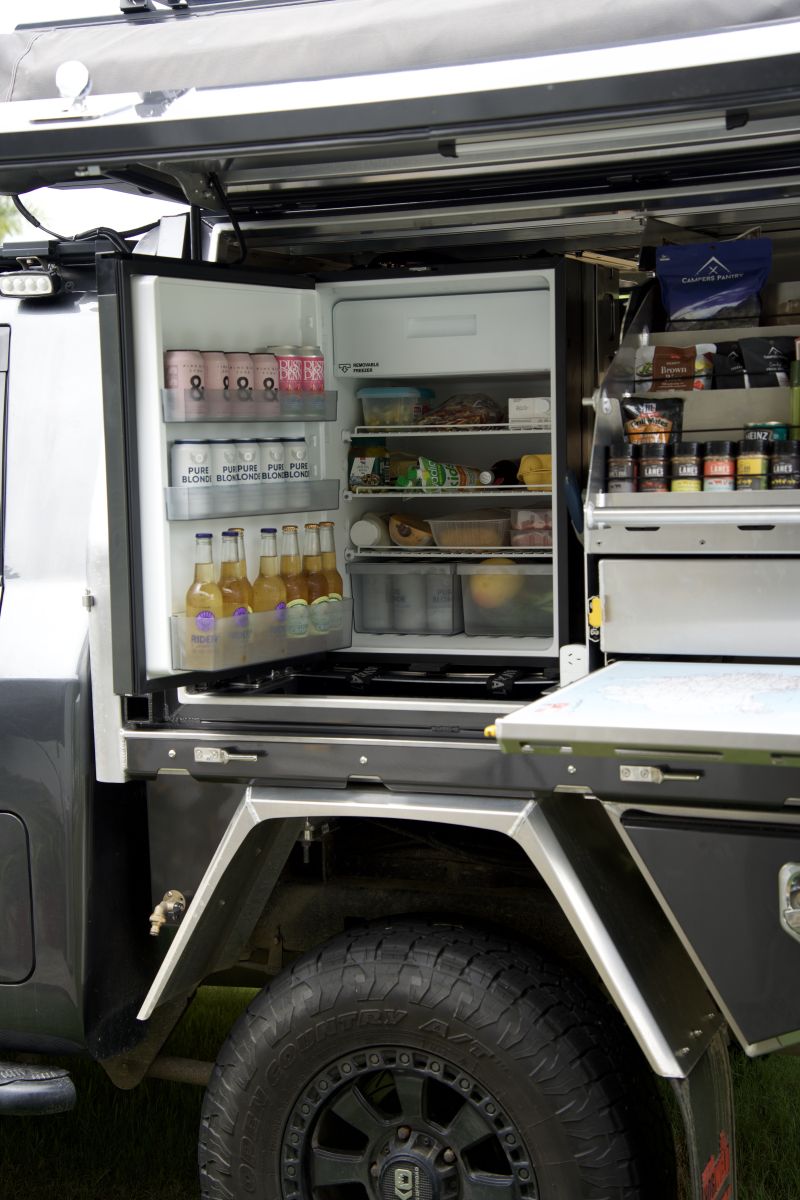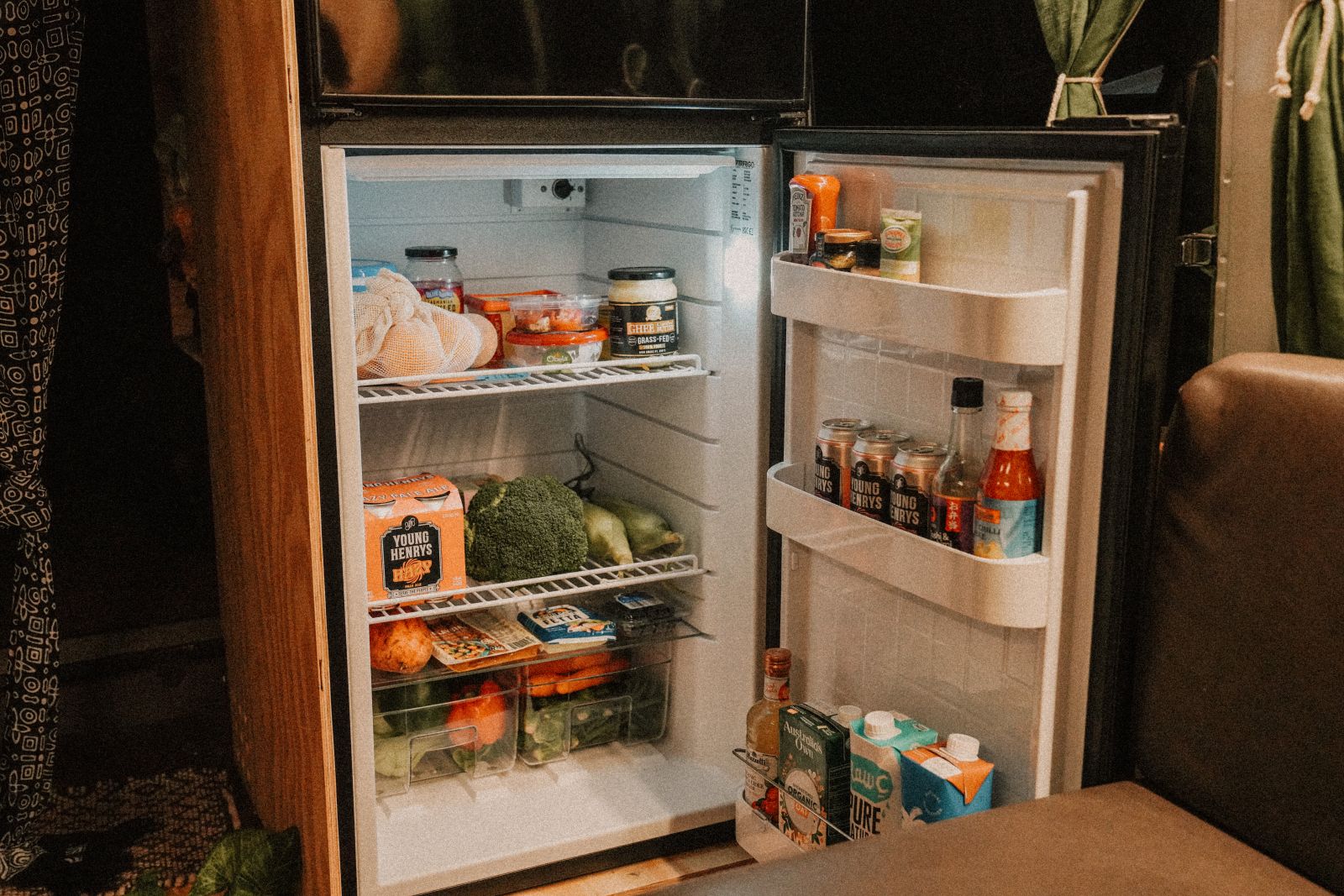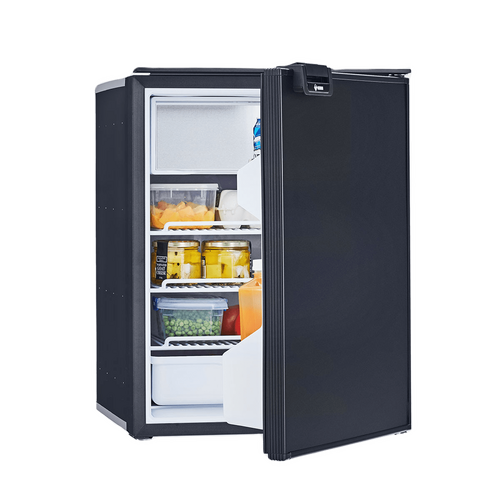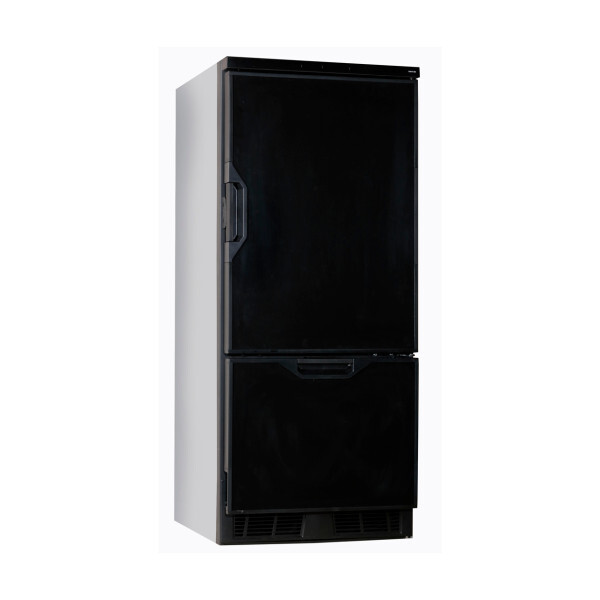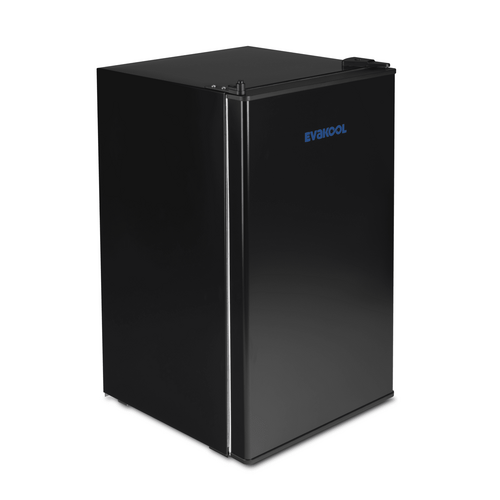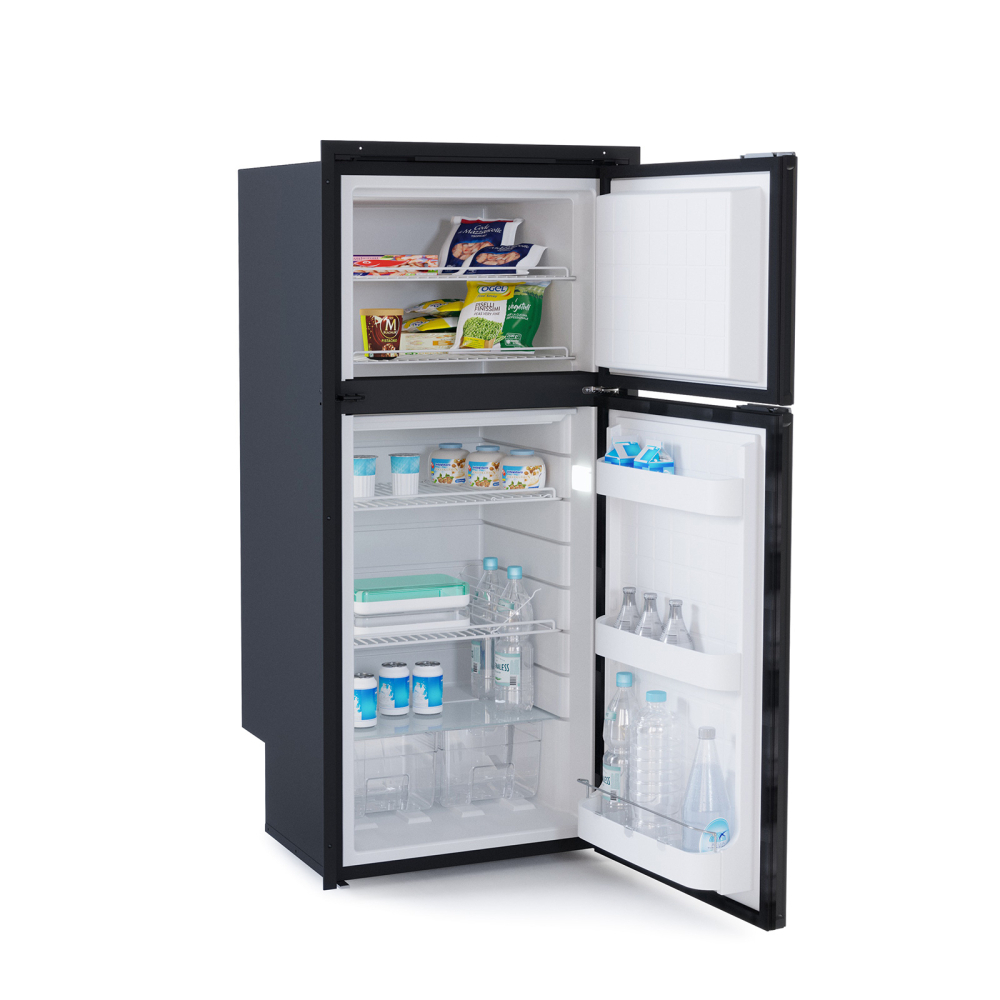Hitting the open road in your caravan is the Aussie dream, right? But let's be honest, nothing can put a damper on your trip faster than a warm beer or spoiled snags. When it comes to choosing a caravan fridge freezer, you need to look for more than just space for the beer and wine! Think about keeping your essentials fresh and safe, especially when you're tackling Australia's diverse climate – from the scorching heat of the outback to the humid tropics. Reliable refrigeration isn't just a convenience; it's a must-have for any extended adventure.
Today, there is a huge range of fridge-freezers designed especially for caravans, motorhomes, camper trailers, boats, horse floats etc. In fact, it can be quite overwhelming trying to find the right caravan fridge freezer for your needs. That's where we come in. This isn't just another run-of-the-mill guide. We've gone the extra mile, combining comprehensive testing with insights from industry experts, to bring you the lowdown on what really matters. We'll cut through the jargon and give you the straight facts so you can make the right choice.
Here, we share the different types of fridges you can select from, as well as the key things to look for. This article focuses on the upright caravan fridge freezers that are typically installed inside your recreational vehicle. If you're considering a portable camping fridge to move in and out of your vehicle, you can check out our Camping Fridges Buyers Guide.
By the end of this guide, you’ll understand exactly which type of fridge suits your specific caravanning needs, ensuring your next trip is chilled out in more ways than one. Let's dive in!
Understanding the Fundamentals of Caravan Refrigeration
So, you might be thinking, "A fridge is a fridge, right?" Well, not exactly when you're talking about one designed to handle life on the road. Caravan refrigeration differs from your standard home fridge in a few key ways, mainly because they need to be more robust, energy-efficient (especially when running off-grid), and able to cope with movement and varying conditions. Let's break down some of the important stuff.
Key Terminology Explained
To get your head around choosing the best caravan fridge Australia has to offer, it helps to know a few key terms:
-
Compressor Fridges: These work in a similar way to your home fridge. They use a compressor to circulate refrigerant gas, which cools the inside. Generally, they're more energy-efficient, especially in warmer climates, and cool down quickly. You'll often find these in both upright caravan fridge models and some portable options.
-
Absorption Fridges (3-Way Fridges): These are a bit different. They use heat to circulate the refrigerant (ammonia, water, and hydrogen). The beauty of these is they can run on 12V DC, 240V AC, or LPG gas, giving you flexibility when you're off the grid. However, they can be less efficient in hot weather and need to be level to operate properly.
-
Tropical Rating: This is a crucial one for Aussie conditions! A fridge with a tropical rating is designed to operate efficiently even when the ambient temperature is high (typically up to 43°C or even higher). If you're planning on doing a lot of travel in the warmer parts of Australia, this is a must-have.
-
Amp Draw: This refers to the amount of electrical current the fridge uses. It's super important to know this so you can calculate your power needs, especially if you're relying on batteries.
-
Insulation: Just like in your house walls, good insulation in a caravan fridge is vital. It helps keep the cold in and the heat out, reducing the amount of energy the fridge needs to use.
Types Of Caravan Fridge Freezer Models
You've got two main contenders when it comes to upright caravan fridges: compressor fridges (often called 2-way) and absorption fridges (the 3-way variety). Let's take a closer look at each.
Compressor Fridges (2-way)
These fridges operate much like the one in your kitchen, using a compressor to circulate refrigerant gas and keep things cool. They typically run on either 12/24V battery power or a 240V electrical hook-up. Big players in this market include Dometic, Vitrifrigo, Bushman, Engel, and Thetford.
Working Principles
Imagine a cycle where a special gas is compressed, which makes it hot. This hot gas then flows through coils on the outside of the fridge, releasing heat. As it releases heat, it turns into a liquid. This liquid then flows through another set of coils inside the fridge (the evaporator). Here, it evaporates back into a gas, and this process absorbs heat from inside the fridge, making it cold. The gas then goes back to the compressor, and the cycle starts again.
Power Consumption Analysis
Compressor fridges are generally more energy-efficient than absorption fridges, especially when the ambient temperature climbs. They draw a certain amount of power (measured in amps) when the compressor is running. The duty cycle (how often the compressor runs) will increase as the outside temperature gets hotter, meaning they'll use more power on a scorching day in the Kimberley compared to a cooler evening in Tasmania. However, even with the increased duty cycle, their overall power consumption tends to be lower than an absorption fridge running on 12V in similar conditions.
Advantages in Australian Conditions:
-
Efficiency in Heat: They perform exceptionally well in high ambient temperatures, making them ideal for Aussie summers.
-
Faster Cooling: Compressor fridges cool down much quicker than absorption models, which is handy when you're setting up camp.
-
Less Sensitive to Levelling: Unlike absorption fridges, they don't need to be perfectly level to operate efficiently.
-
Lower Power Consumption (Generally): Especially when compared to absorption fridges running on 12V.
Limitations and Considerations:
-
Noise: They produce a slight humming noise when the compressor is running, which might bother some light sleepers.
-
Higher Upfront Cost: Generally, compressor fridges are more expensive to buy initially.
-
Reliance on Power: They need either a 12/24V battery system or a 240V connection to operate.
Ideal Usage Scenarios:
-
Frequent travel in hot climates.
-
Those prioritising energy efficiency and faster cooling.
-
Setups with robust solar and battery systems.
-
Travellers who don't rely heavily on free camping without electrical hook-ups.
Absorption Fridges (3-way)
3-way fridges were the original choice for RVs, and they still have their advantages. The key selling point is their versatility in power sources: 12/24V DC, 240V AC, and LPG gas. Instead of a compressor, they use heat to circulate refrigerant (a mix of ammonia, water, and hydrogen).
Working Principles:
Imagine a system where heat is applied to a solution of ammonia and water. This heat causes the ammonia to vaporise. The ammonia vapour then travels to a condenser where it cools and turns into a liquid. This liquid ammonia then flows to an evaporator where it mixes with hydrogen gas. This mixture evaporates, and in doing so, absorbs heat from inside the fridge, making it cold. The ammonia and hydrogen gas then travel to an absorber where the ammonia is reabsorbed into the water, and the cycle begins again. The heat source can be an electric element (for 12V or 240V operation) or a gas burner.
Gas Consumption Rates:
Running a 3-way fridge on gas is quite efficient. You can typically expect to get around 10-14 days of operation from a standard 9kg LPG gas bottle, depending on the fridge size and ambient temperature. This makes them great for extended off-grid stays.
Temperature Performance Limitations:
Absorption fridges can struggle a bit more in very high ambient temperatures compared to compressor models. Their cooling performance can be less efficient when the mercury really rises. Also, as we mentioned earlier, they need to be reasonably level to operate effectively. If they're tilted too much, the refrigerant circulation can be disrupted.
Advantages:
-
Power Source Versatility: The ability to run on gas is a huge advantage for extended free camping.
-
Silent Operation: With no moving parts like a compressor, they operate almost silently.
-
Lower Upfront Cost (Potentially): Some absorption models can be more budget-friendly than high-end compressor fridges.
Maintenance Requirements:
Absorption fridges generally require less maintenance as they have fewer moving parts. However, it's important to ensure proper ventilation around the fridge, especially when running on gas, and to keep the burner and flue clean.
Ideal Usage Scenarios:
-
Frequent and extended free camping where access to mains power is limited.
-
Travellers who prioritise silent operation.
-
Those looking for a more budget-friendly initial purchase (depending on the model).
-
Setups where gas is readily available and used for other appliances.
Power Source Considerations
Choosing the right power source for your caravan fridge freezer is just as important as selecting the fridge itself. Each option comes with its own set of advantages and disadvantages, and what works best for one traveller might not be ideal for another.
12V/24V Battery Power
As mentioned, compressor fridges are particularly efficient when running on 12V or 24V power, and this is a common choice for many caravanners, especially those with good battery and solar setups.
While Dometic's NRX115 boasts a low draw of 1.27Ah over 24 hours, it's important to understand that power consumption can vary significantly between different models, sizes, and brands. Factors like insulation quality, ambient temperature, and how often the fridge door is opened all play a role. When researching, look for the average amp draw or 24-hour consumption figures provided by the manufacturer. Some fridges might draw more amps when initially cooling down but then cycle on and off, resulting in a lower average consumption.
Battery Capacity Requirements Calculation Guide
To figure out what battery capacity you'll need, you'll need to know the fridge's average amp draw and how long you expect to run it without a charge source (like solar or driving). Here's a simplified way to calculate it:
Find the average amp draw of your fridge. Let's say it's 3 amps.
-
Estimate the number of hours per day the fridge will be running. This can vary, but let's assume it runs for 12 hours out of 24 (a 50% duty cycle).
-
Calculate the daily amp-hour consumption: 3 amps x 12 hours = 36 amp-hours per day.
-
Consider the number of days you need to run the fridge without charging. If you want to run it for 2 days without charging, you'll need 36 amp-hours/day x 2 days = 72 amp-hours of usable battery capacity.
-
Account for battery discharge limits. Most deep-cycle batteries (like AGM or lithium) shouldn't be discharged below 50% of their capacity to prolong their lifespan. So, if you need 72 amp-hours of usable capacity, and you shouldn't discharge below 50%, you'll need a battery with at least 144 amp-hours of total capacity.
Integration with Solar Systems:
Solar panels are a fantastic way to offset the power consumption of your 12V/24V fridge, especially when free camping. The size of your solar array will determine how much power you can generate. A well-sized solar system can keep your batteries topped up during the day, allowing you to run your fridge without constantly worrying about draining your batteries. Consider factors like panel wattage, regulator type (MPPT is more efficient), and average sunlight hours in your travel locations.
Smart Power Management Options:
There are various smart devices available to help you manage your power consumption. Battery monitors can give you real-time information on your battery levels and usage. Some fridge models even have built-in low-voltage cut-offs to prevent your battery from being completely drained. Investing in quality battery management systems can significantly improve the reliability of your off-grid power.
240V Mains Power
This is the simplest power source when you're plugged into mains power at a caravan park or using a generator.
Running a compressor fridge on 240V is generally efficient as it's directly using mains power. However, if you're running a 12V compressor fridge via an inverter, there will be some energy loss during the conversion from 12V to 240V and back down to the fridge's operating voltage.
If you have a 12V/24V fridge and want to run it on 240V, you'll need a 12V power supply or a battery charger that can provide a stable 12V output. Some people also use inverters to run 240V fridges off their battery systems, but as mentioned, this can be less efficient.
LPG Gas Operation
The unique advantage of 3-way absorption fridges is their ability to run on LPG gas, making them ideal for extended off-grid stays.
Consumption Rates: A typical consumption rate is around 15-20g of gas per hour. This means a standard 9kg gas bottle can last for roughly 18-25 days if the fridge is running solely on gas (9000g / 20g/hr = 450 hours; 450 hours / 24 hours/day ≈ 18.75 days). However, factors like ambient temperature and fridge size can affect this.
Availability Considerations in Remote Areas: While LPG is generally available across Australia, it's worth considering the availability of refills in very remote areas. Planning your gas usage and knowing where you can get refills is crucial for long outback trips.
Safety Considerations: When running a fridge on gas, safety is paramount. Ensure your caravan has proper ventilation, and that the gas connections are sound and regularly inspected for leaks. It's also essential to have a carbon monoxide detector installed in your caravan as a safety precaution. Remember that it's not recommended to run a 3-way fridge on gas while refuelling your vehicle.
Size and Capacity Planning Guide
Choosing the right size for your caravan fridge freezer is a balancing act. You need enough space to keep your essentials fresh for your trip, but you also need to consider the physical space in your caravan and the impact on power consumption.
While there's no exact science, here's a formula you can adapt based on your specific needs:
(Number of People x Days of Trip x Litres per Person per Day) + Buffer = Required Capacity (Litres)
Let's break down each component:
-
Number of People: This is straightforward. How many people will be relying on the fridge?
-
Days of Trip: How long will you be on the road between restocking? Be realistic here.
-
Litres per Person per Day: This is the tricky part and depends on your eating habits and what you need to keep cold. As a rough starting point, you could use:
-
Short Trips (3-4 days): 5-7 litres per person per day (focus on essentials and a few treats).
-
Medium Trips (5-7 days): 7-10 litres per person per day (allowing for more fresh produce and meal prep).
-
Long Trips (7+ days) or Remote Trips: 10-15 litres per person per day (need to carry more staples and potentially frozen meals).
-
-
Buffer: It's always good to have a little extra space for unexpected items or leftovers. Add a buffer of around 10-20% of the calculated capacity.
Example:
Let's say you're a family of 4 heading out for a 5-day trip and want to shop only once. You estimate needing around 8 litres per person per day.
(4 people x 5 days x 8 litres/person/day) + 15% buffer = 160 litres + 24 litres = 184 litres
In this case, you'd be looking at a fridge freezer with a capacity of around 180-200 litres.
Space-Saving Designs and Innovations
Caravan fridge manufacturers are constantly innovating to maximise capacity within compact footprints. Keep an eye out for features like:
-
Slimline Designs: Fridges designed to fit into narrower spaces.
-
Drawer Fridge-Freezers: Great for utilising under-bench space and offering easy access.
-
Adjustable Shelves: Allow you to customise the layout to fit larger items.
-
Integrated Freezer Compartments: Some offer surprisingly spacious freezer sections.
-
Efficient Door Storage: Designed to hold more than just a few bottles.
Australian Climate Considerations
Let's be honest, a fridge that works a treat in Melbourne in autumn might struggle in Darwin during the build-up. That's why understanding temperature ratings and how fridges perform in extreme Australian conditions is so important.
Explanation of Temperature Ratings (N, SN, ST, T):
Fridge manufacturers use a system of temperature ratings to indicate the ambient temperature range in which the appliance is designed to operate efficiently. Here's a quick rundown of the common ones:
-
N (Normal): Designed to operate in ambient temperatures from +16°C to +32°C.
-
SN (Subnormal): Suitable for cooler environments, with an ambient temperature range of +10°C to +32°C.
-
ST (Subtropical): Designed for warmer climates, with an ambient temperature range of +16°C to +38°C.
-
T (Tropical): Specifically designed for hot and humid conditions, with an ambient temperature range of +16°C to +43°C (and sometimes even higher).
For most of Australia, especially if you plan on travelling beyond the southern states, you'll want to be looking at fridges with an ST or, ideally, a T (Tropical) rating. This ensures the fridge can maintain its internal temperature even when the mercury is climbing.
Special Considerations for Tropical Regions
If you're planning on spending a lot of time in tropical areas of Australia (like North Queensland, the Northern Territory, or parts of Western Australia during the wet season), a tropical-rated fridge is a must-have. The combination of high temperatures and humidity puts a significant strain on refrigeration systems.
In these conditions, consider:
-
Compressor Fridges: Generally perform better in high heat compared to absorption fridges. Look for models specifically marketed as being suitable for tropical use.
-
Ventilation: Ensure your fridge has excellent ventilation, as this is even more critical in hot and humid environments to allow heat to dissipate effectively.
-
Sun Protection: Parking your caravan in the shade can significantly reduce the workload on your fridge. Consider using awnings or finding shaded campsites.
Insulation Enhancements and Their Impact
Good insulation is your fridge's first line of defence against the heat. Thicker and better-quality insulation will help to:
-
Reduce heat transfer: Keeping the outside heat from getting inside the fridge.
-
Improve energy efficiency: The fridge won't have to work as hard to maintain its temperature.
-
Maintain consistent temperatures: Even when external temperatures fluctuate.
Look for fridges that boast high-quality insulation. Manufacturers might not always provide detailed specs, but thicker walls and a solid door seal are good indicators.
Strategies for Operating in Varying Climates
Even with a top-notch fridge, there are things you can do to help it perform optimally in different climates:
-
Pre-cool the fridge: Before your trip, get the fridge down to temperature using mains power if available.
-
Minimise door openings: Every time you open the door, you let cold air out and warm air in.
-
Pack strategically: Don't block air vents inside the fridge. Ensure there's good airflow around the contents.
-
Keep food cold before loading: Don't put warm food straight into the fridge.
-
Consider external fans: In very hot conditions, you might consider adding small fans to improve ventilation around the fridge.
-
Monitor performance: Keep an eye on the fridge's internal temperature, especially in extreme heat.
Brand Analysis
Let's break down some of the major players in the Australian caravan fridge freezer market. Choosing the right brand can give you peace of mind regarding performance, reliability, and support, especially when you're investing in something as crucial as keeping your food cold on the road.
Important considerations when choosing a brand:
-
Your Budget: Prices can vary significantly between brands and models.
-
Your Travel Style: Are you mainly staying in caravan parks, or are you planning extended off-grid trips?
-
Power Management: How robust is your battery and solar setup?
-
Space Constraints: What physical size and configuration do you need?
-
Warranty and Support: Consider the brand's warranty terms and the availability of service in your travel areas.
Dometic offers a wide variety of caravan fridge freezers, utilising both compressor and absorption technology, and is known for its extensive service network across Australia, making it a reliable choice for many travellers.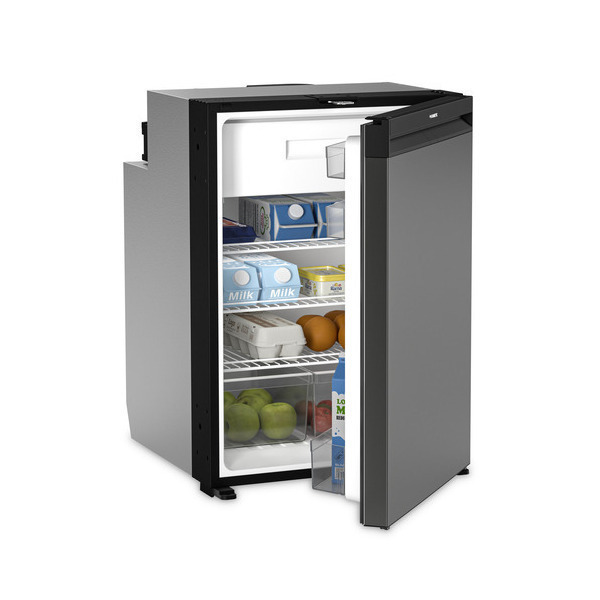
Bushman primarily focuses on high-quality compressor fridges specifically designed to excel in the demanding hot conditions often found in Australia, making them a favourite for off-grid adventures due to their robust performance and energy efficiency.
Engel primarily manufactures incredibly durable and efficient compressor fridges that perform exceptionally well in harsh Australian environments, often favoured by those needing reliable cooling in remote locations, and has a legendary reputation for their longevity.
Thetford provides a good balance of price and performance with their caravan fridge freezers, offering both compressor and absorption options and a widely available after-sales support network.
Evakool primarily produces durable and energy-efficient compressor fridges that are well-suited to the Australian climate and often come at a competitive price point, making them a solid choice for many caravanners.
Vitrifrigo primarily offers a more premium and stylish range of compressor fridges, often featuring stainless steel finishes and advanced features, and is known for its high-quality build, particularly in marine and RV applications.
Choosing the best caravan fridge Australia has to offer is a significant decision that will directly impact your travel experience. It's about more than just keeping your drinks cold; it's about food safety, convenience, and making the most of your adventures, whether you're chasing the sun up north or exploring the stunning coastline. To recap, when you're on the hunt for the perfect caravan fridge freezer, keep these key factors front of mind:
-
Type of Fridge (Compressor vs. Absorption): Consider your power setup and travel style. Compressor fridges are generally more efficient and perform better in heat, while absorption fridges offer the flexibility of gas operation for off-grid stays.
-
Size and Capacity: Calculate your needs based on trip length, number of people, and shopping habits. Remember, bigger isn't always better.
-
Performance in Australian Conditions: Especially if you're heading to warmer climates, prioritise fridges with a good tropical rating (ST or T) and robust performance in high temperatures.
-
Energy Efficiency: Crucial for off-grid living. Look for models with low amp draw and consider your solar and battery capacity.
-
Build Quality and Durability: Caravans can be tough environments, so choose a fridge built to last.
-
Power Source Considerations: Understand the pros and cons of 12V/24V, 240V, and LPG, and how they fit your setup.
-
Brand Reputation and Support: Opt for reputable brands with good warranties and after-sales support in Australia.
Final Recommendations:
To help you narrow it down, here are some general recommendations based on typical caravanning scenarios:
-
Frequent Travel in Hot Climates: A high-quality compressor fridge with a good tropical rating (like many from Engel, Bushman, or certain Dometic and Evakool models) is your best bet for reliable cooling.
-
Extended Off-Grid Camping: An absorption fridge (like those from Dometic or Thetford) offers the flexibility of gas operation, but be mindful of their performance in extreme heat and the need for level positioning. Alternatively, a very energy-efficient compressor fridge paired with a robust solar and battery system can also work well.
-
Short Weekend Trips and Caravan Parks: A smaller compressor fridge (60-100 litres) is often sufficient and can be more budget-friendly. Brands like Thetford and some Dometic models offer good options here.
-
Prioritising Energy Efficiency: Look closely at the amp draw figures. Brands like Bushman and Engel are particularly known for their low power consumption.
-
Limited Space: Consider compressor drawer fridge-freezer models or slimline upright fridges.
A fridge is probably one of the most important pieces of kit you will buy for your caravan - so be sure to do your research and choose wisely - Check out our full range of Caravan Fridge Freezer models for more info. Happy travels, and may your drinks always be cold!
Caravan Fridge Freezer FAQs
Q: Are compressor fridges better than absorption fridges?
A: It depends on your needs. Compressor fridges are generally more energy-efficient and perform better in heat, while absorption fridges offer gas operation for off-grid use.
Q: How much power does a caravan fridge use?
A: Compressor fridges typically draw between 1-5 amps when running. Absorption fridges draw significant power on 12V and use around 15-20g of gas per hour.
Q: Do caravan fridges need ventilation?
A: Yes, especially absorption fridges. Proper ventilation is crucial for efficient and safe operation.
Q: Can I run a 3-way fridge on 12V while stationary?
A: It's generally not recommended as it can drain your battery quickly. 12V is primarily for maintaining temperature while travelling.
-
DISCLAIMER* Please note, this advice is general in nature and we strongly recommend consulting the product manual and where relevant, a professional installer.
